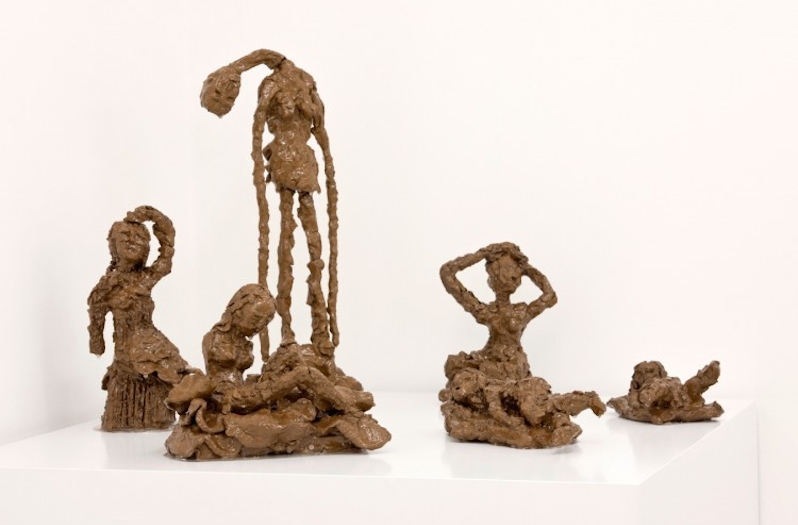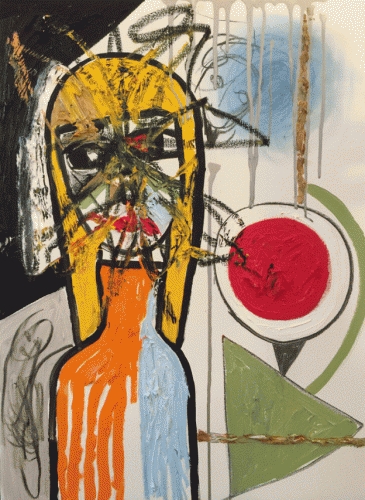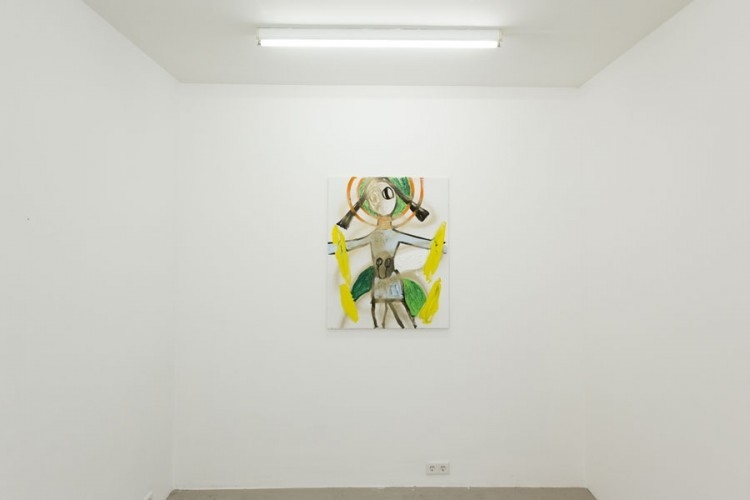Marliz Frencken: Crazy Woman
Her first success came early: shortly after graduating, Marliz Frencken showed very refined and precisely painted scenes of the world around us, such as those we see in photos, images from magazines, boxes of Dreft, the newspaper or a roll of wallpaper. A woman’s world. The list of exhibitions grew steadily: Gallery Hans Gieles, First Blossom, Barbara Farber Gallery, Bébert, exhibitions by Jan Hoet, Ornis A. Gallery; and yet, one couldn’t really say that Marliz Frencken was really embraced by the art world. However, she always continued working relentlessly every day in her studio. In her ground-floor studio are large, thickly painted black and white depictions of a mother and child. The emotion in these paintings surges out to the edges, spilling over the edge. ‘I fell in love with those pictures’, explains Marliz about her first oil paintings. ‘I enjoyed the resistancethat the images provoked, their mockery and irony and giving the painting a new, loving layer. ’Marliz Frencken was ahead of her time; glamour was not yet an issue, and there were all sorts of unwritten rules in art, such as ‘Thou shalt not paint Barbies’ or ‘fashion is superficial’ or ‘male themes are better than female themes’. Regarding this taboo-breaking character of Frencken’s work, Der Spiegel stated: ‘She operates with no safety net of art-world niceties.’ (2) That is also how I see the universe of Marliz Frencken, you always have to take a deep breath, but that’s because you need to be able to look without judgement, the work goes against all the rules. No niceties. Immediately after the birth of Marliz, her mother fell seriously ill and spent her days in bed at home or in hospital, while her body gradually gave up. When Marliz was thirteen years old, her mother died leaving her behind with her father and three brothers. ‘I saw so much as a child’, says Marliz Frencken. She speaks with love and admiration for her mother, who bore her illness so patiently and always remained so positive. On her phone she shows me a portrait of her mother; piercing brown eyes, dark curly hair, a red jacket. This was the only real painting that she saw until she was about thirteen. The portrait hangs in her house in Hilversum, but also as a copy in her holiday home, in her studio, and as a screensaver. Her mother watches over her like a Madonna. The painting of her mother is so dear to her because it evokes this integrity and innocence. In her work she seeks beauty, perhaps an impossible beauty in those very first images, as a counterbalance but also to scorn the world. Outside and inside, an acerbic darkness and a sincere naivety. ‘If you have missed your mother as a child, you always retain that physical longing. Just like a child that has died and always stands by your side, the longing remains, even as a grown woman. I lost a dog that I adored and it walks forever beside me, as it were. Your body is the measure, the source, all experiences are stored somewhere in the body. You make a drawing out of that individual physicality and in those proportions.’Then there is this collection of subdued sculptures with a cardboard-like colour. These are reminiscent of Giacometti; the reference is clear, the tradition is present, the handprint visible. The fragility of these sculptures makes their existence waver. ‘All the art of the past rises up before me, the art of all ages and all civilizations, everything becomes simultaneous, as if space had replaced time. Memories of works of art blend with affective memories, with my work, with my whole life.’ (Alberto Giacometti)
This press release is based on a recently published article by curator Hanne Hagenaars, written for Mister Motley (September 14, 2015).







